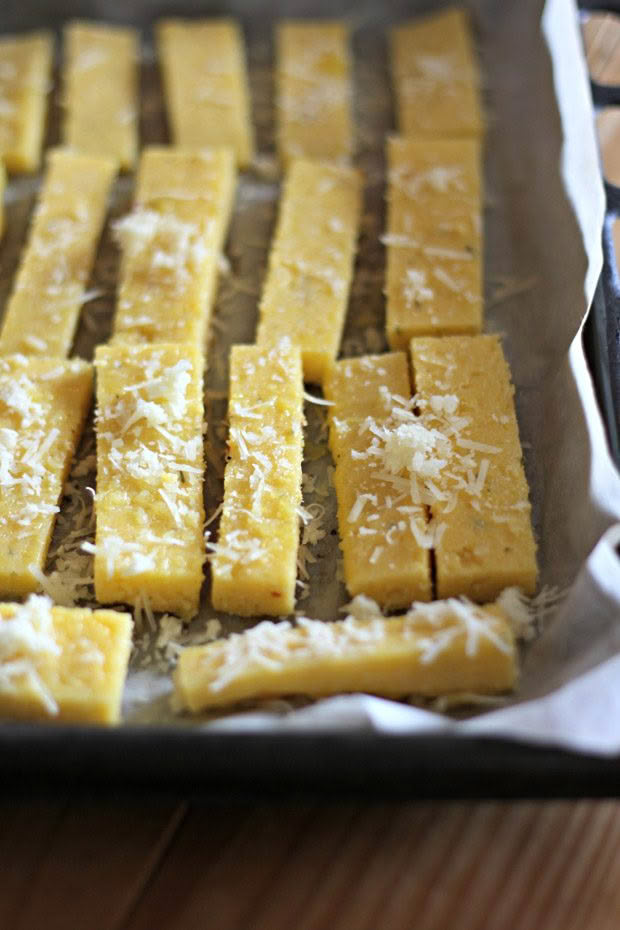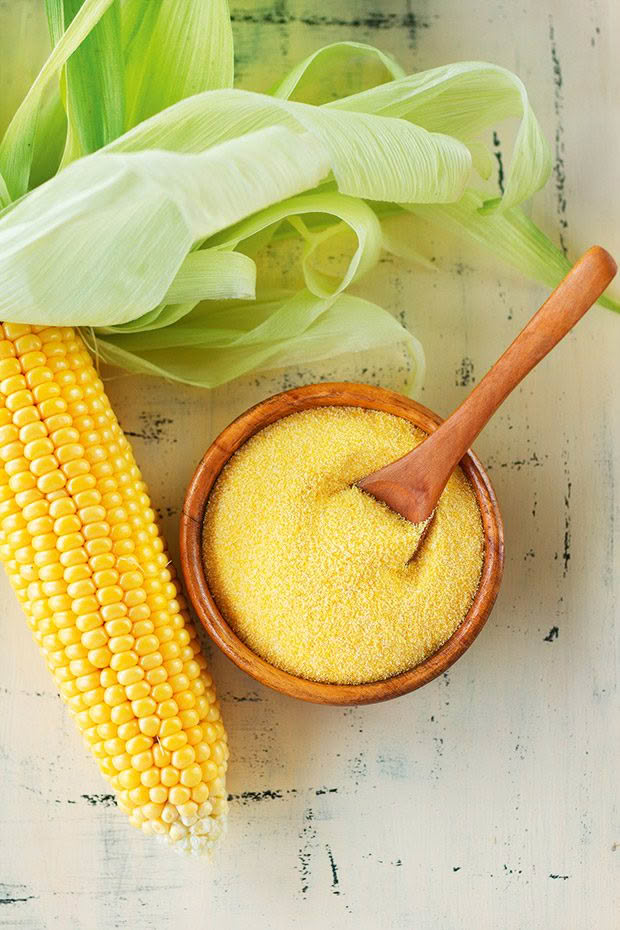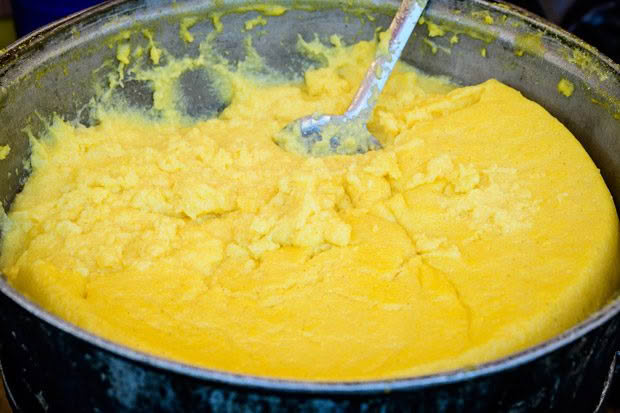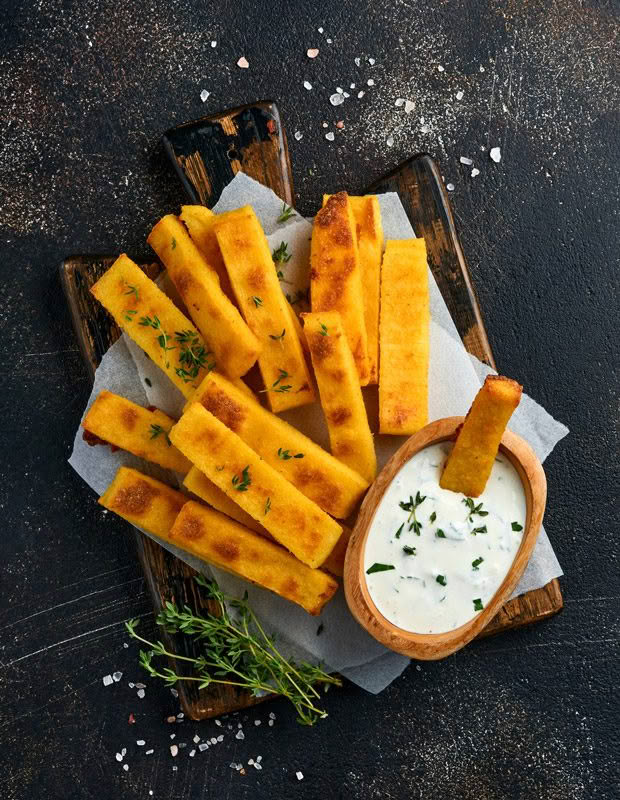Why you should consider polenta for your next cosy meal

The Italians know how to create comforting winter food, but writer Kristina Jensen takes it one step further.
Words: Kristina Jensen
I have a catalogue of dishes in my head, and each one is accompanied by the distinct personality of the cook who shared that food with me. Polenta will always be associated with a belly dancing Italian flatmate from long ago.
I often cast my memory back to days when I would watch her effortlessly whisk up a pot of polenta. She’d toss in a handful of parmesan and freshly chopped herbs from our rambling organic garden. The bright yellow porridge-like mush would be poured onto a wooden board and left to cool while she whipped up a tomato ragu to go on top.
For the past 30 years, I’ve repeated her basic polenta cooking method, and tried all kinds of different polenta dishes. It’s one of my family’s favourite foods, and our grown-up children still ask for it when we get together.
Polenta is a perfect winter comfort food, absorbing flavours into its satisfying creamy texture. My most recent experiment has been a polenta version of two of the most popular foods in the world: hot fried potato chips and hash browns.

I love potatoes. My mother came from Irish stock, and potatoes are almost part of our genes. But polenta has a different mouthfeel, a hot, creamy stodginess inside a crispy exterior that carb lovers crave.
Unfortunately, carbs get a bad rap these days. In my research, I discovered some foods contain resistant starch, which remains undigested as it passes through the stomach and small intestine.
Instead, it moves into the large intestine where it begins to ferment, feeding the good bacteria in your gut and producing by-products that benefit lower gut health.
When corn (or rice, potatoes, other grains, legumes, pasta) is cooked, then – critically – allowed to cool, the starches convert into resistant starches. These don’t release glucose (which then cause blood sugar to rise). Polenta isn’t high in resistant starch, but it’s still a benefit of the recipe below.
WHAT IS POLENTA?
Made from: ground corn kernels
Origin: Northern Italy
Polenta is made from an Italian flint corn. There are different kinds of polenta on the market, ranging from coarsely ground to super fine, white to yellow.

Instant quick-cooking or tubed polenta products are also available, which give a very different result than the coarser varieties. Their convenience is appealing, but for me, they’re often mushy and bland.
4 TIPS TO LUMP-FREE POLENTA
Polenta has a reputation for being a fussy, lumpy, difficult-to-master dish. It can be tricky to cook, but to help you get a smooth texture:
1. Use a heavy-based pot for better heat conduction.
2. Bring the water to the boil, add the salt and oil, then turn the heat right down to very low.

3. Gradually pour in the polenta, whisking or mixing constantly to avoid lumps.
4. Keep stirring for about 10-15 minutes until the polenta begins to separate from the sides of the pot (which means it’s cooked).
Polenta can be served as a creamy ‘mash’, grilled, fried, or baked. It’s also gluten-free; a base for a wide range of flavours, such as herbs, spices, cheeses, and roasted seeds, and a high energy starch that adds bulk to your diet without adding fat.
Polenta Chips and Hash Browns
These taste great plain, but you can flavour them with herbs or spices. My favourites include 4 tbsp of finely chopped, mixed herbs such as rosemary, parsley, thyme and oregano, and/or 1 tbsp of smoked paprika.

Serves: 4
Time: 60 minutes (not including cooling)
INGREDIENTS
4 cups chicken or vegetable stock
1½ cups polenta
1 tsp sea salt
2 tbsp of olive oil
½ cup grated parmesan or tasty cheese
METHOD
If you’re using powdered stock, make it up according to the instructions on the pack. Bring the stock, salt, and olive oil to the boil, then turn it down to low. Add the polenta in a steady stream, whisking constantly. The mixture will begin to thicken – be very careful that it doesn’t ‘plop’ up and burn your hand (polenta is very ‘ploppy’)
Cook for 10-15 minutes, whisking constantly until the polenta comes away from the sides of the pot. Remove from the heat and whisk in the cheese. Add the herbs and paprika if you’re using them.

Pour the polenta into a container. For chips, you want a large container and a depth of 1.5cm; for hash browns, you can use a smaller, deeper one (10cm deep). Smooth out the top using the back of a spoon or a spatula. If you want the polenta to be super smooth on top, cover it with plastic wrap and press down.
Allow the polenta to cool slightly, then cover and refrigerate until cold (2-3 hours).
To make chips or hash browns, turn the polenta out onto a chopping board and slice it into thick chips, or rectangular shapes for hash browns. Place the chips/hash browns on a generously oiled baking tray lined with greaseproof paper – turn them over, so both sides are oiled or use a pastry brush.
Bake in the oven at 200°C for 25-35 minutes, or until golden and crispy – turn after 15 minutes to get an even browning. These chips and hash browns can also be fried in a pan with a splash of soy sauce or tamari until golden brown.
MORE HERE
Love this story? Subscribe now!
 This article first appeared in NZ Lifestyle Block Magazine.
This article first appeared in NZ Lifestyle Block Magazine.
